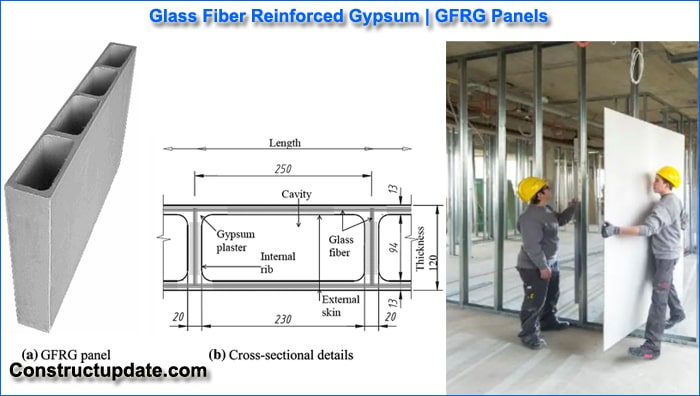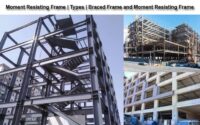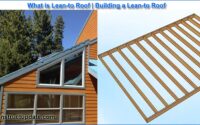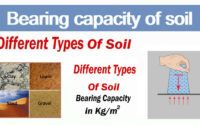Glass Fiber Reinforced Gypsum | GFRG Panel Applications | Disadvantages of GFRG
What is Glass Fiber Reinforced Gypsum?
Modern buildings are mostly constructed of several types of materials. It is critical to understand the subtleties of the most often used building materials, whether you are a builder, architect, engineer, or contractor.
Knowledge of numerous types of construction materials, as well as the details of their qualities and varied usage for various reasons, is a valuable resource in the hands of builders when it comes to lowering construction costs.
The correct use of materials results in superior structural strength, aesthetic appeal, and functional efficiency, in addition to material savings. We’ll look at one of these building materials, commonly known as “GFRG,” in this post.
What is the GFRG Panel?
Glass Fiber Reinforced Gypsum is referred to as GFRG. Fast walls are another name for GFRG panels. These building panels are comprised of calcined gypsum plaster that has been strengthened with glass fibres.
The GFRG Building System Australia was invented it in 1990 with the aim of constructing large-scale structures. These panels are currently being used in India and other developing countries.
GFRG panels are typically 12 metres long, 3 metres wide, and 0.124 meters deep. Gypsum, glass fibre, concrete slurry, and additives like water-repellent emulsion make up the majority of these panels.

GFRG Panel Classification
Class 1: Water-Resistant Class
Water-resistant Glass Fiber Reinforced Gypsum panels are used to construct exterior walls in moist places where water resistance is essential. Additionally, this type of GFRG panel is employed in the formwork of floors and walls for concrete filling.
Class 2: General Grade
General-grade In dry climates, GFRG panels can be employed for structural and non-structural applications. When it comes to erecting external or internal walls, these sorts of panels are often not suited. They are not suggested for use as wall or floor formwork.
Class 3: Degree of Partition
Partition-grade Non-structural interior partition walls are best built with GFRG panels. Only dry places should use this sort of GFRG panel.
Applications of The GFRG Panel In Civil Construction:
Use of the GFRG panel in the construction of houses:
1. Load-Bearing Walls
Load-bearing structures in buildings are one of the most prevalent uses for GFRG panels. The compressive strength of GFRG panels increases as the cavities inside them are filled with concrete.
In addition, the panel’s ability to sustain lateral stresses is improved when reinforcing bars are added.
Currently, the usage of these load-bearing structures in construction is the best option for multi-story buildings.
The cavities can be filled with an alternate structural material, such as quarry powder combined with 5% cement, for the construction of a one- or two-story building.
However, the filling protocol is advised for every third or fourth cavity, as well as all joints and openings. Filling should preferably be done with M20 concrete.
It must also be strengthened with an 8 mm reinforcing bar.
2. Horizontal Floor and Roof Slabs
Fiberglass Reinforced In conjunction with reinforced concrete constructions, gypsum panels can be utilised as an intermediary floor or slab.
By inserting GFRG into reinforced concrete micro-beams, the strength of these GFRG slabs can be greatly increased.
In order to incorporate micro-beams, the upper flange of the respective cavity is trimmed and removed, leaving a minimum 25 mm flange protruding from both ends.
The GFRG slab and floor panels are cut to size and labelled with notations. Concrete is first poured into the RCC wall joints, cavities, and horizontal beams.
Wherever built-in microwaves are present, a wooden plank with a width of 300 mm to 450 mm is provided to extend between the supporting walls.
Finally, the crane must elevate the roof panels to allow them to float perfectly horizontally.
Each GFRG ceiling panel is installed over the wall with a minimum of 40 mm between them and the wall.
This allows for continuous vertical rod placement from one story to the next, as well as a monolithic RCC structure within the quick wall.
3. Partition Walls
In single and multi-story buildings, GFRG panels can be used to fill partition walls. The GFRG panels’ voids can be correctly filled.
These panels are commonly used as partition walls, but they can also be utilised to clad industrial buildings or sports facilities. They can also be used to create composite or security walls.
Disadvantages of GFRG Panel
- More space is required for the crane to manoeuvre throughout the construction process.
- The intricate design of the GFRG panel can make the construction process more expensive.
- Highly qualified and experienced manpower is required to install the GFRG panels.
- GFRG panels must be handled with extreme caution during shipping and assembly.
- On-site GFRG panel cutting necessitates the use of specialised machinery.
- The entire process of assembling and installing the GFRG panels is sophisticated and can be difficult to follow.
- GFRG panels cannot be utilised to build walls that are circular or taller.
- To reduce abrasion, the panels must be carefully packed.
- For residential constructions, free space is limited to 5m.





